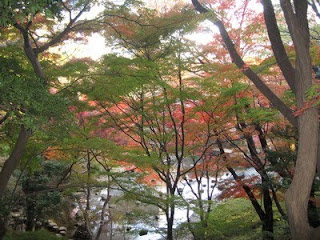A bike is a bike is a bike... or perhaps not.
Hiro finds something rather spiritual about them....
I've never read Zen and the Art of Motorcycle maintenence, perhaps I should....
They had a variety of cars there as well.
Initially I was more intrigued by the sign that the had out the front... I am not sure who they are afraid will protest, or how they can possibly enforce it.
 Happily for me there was an exhibition in the show room of a Honda 'ideas' competition. It seems as though it was open to students across SE Asia as well as Japan.
Happily for me there was an exhibition in the show room of a Honda 'ideas' competition. It seems as though it was open to students across SE Asia as well as Japan.Here are some of them.
A cyclo that will turn old items into new items
A super dog that can do everything from choosing ripe fruit at the supermaket to being a companion when you break your leg.
A cleaner for outer space
It's a great idea to get primary aged kids thinking about the future and giving them a forum for expressing their ideas.
This is an old story - I was waiting to put pics in - it was the same weekend as we went to Meiji Jingu.

























































